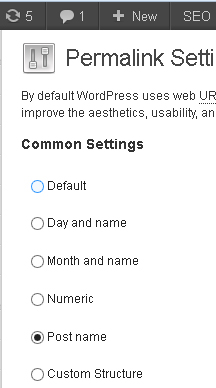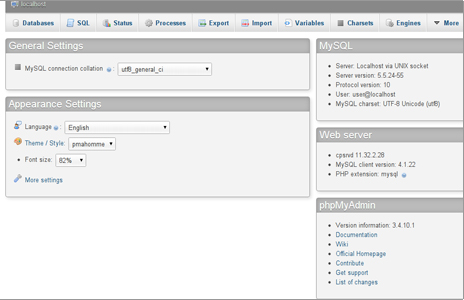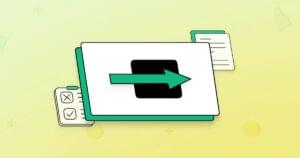Like many web professionals, I’m so busy doing things for clients that it’s true to say that my own site often suffers thanks to a lack of time. One thing that I have been meaning to do for some time is move the site, which is a WordPress site, to another server, as I’m not overly happy with my current hosts. However, it’s one of those things that I’ve put off doing because it does just seem like a lot of hassle, especially since my theme is bespoke and therefore any issues and it will take time to do again (yes, a simple backup will take care of this, I know). Bearing all of that in mind, I can imagine that many people have the same problem, or have no idea where to start, so here you will find instructions on how to carry this out, without losing theme elements or ending up with a site full of broken links.
Keeping the same URL
Firstly, it’s worth noting that if you haven’t really optimized the site and intend on keeping all of the URLs, and the domain name and the database is going to remain the same, then it’s a simple process. If this is the case, then you will just have to copy the files and database across to the new server. If you want to change the name or user of the database you will have to alter the edit.wp-config.php file to ensure that it has the right values. Locate the following in the root folder and alter accordingly.define('DB_NAME', 'user_wrdp1');
/** MySQL database username */
define('DB_USER', 'user_wrdp1');
/** MySQL database password */
define('DB_PASSWORD', 'password');- Plugins
- Theme files
- Any uploads that you’ve made
- The database
Uploading from local to a remote installation
Once you’re fully backed up and ready to go, first of all you’ll need to disable Permalinks. This can be done in the “Permalinks” screen view which is in the “Settings” menu. Choose the default setting and hit save. Then, if you haven’t already, backup the database, make a copy and rename it.
Then, if you haven’t already, backup the database, make a copy and rename it.
Installing WordPress on the new server
Install WordPress as you normally would, either using FTP or through cPanel and then copy all of the files from your local wp-content file to the one on the server using FTP or SFTP. Next, you will need to edit the database in order to replace the local URL with the remote one. For this, use a search and replace utility, preferably not a text editor and change every instance of the local URL to the remote one. You can use SEARCH REPLACE DB for this, which should be installed in the root folder of your WP install for best results. In order to protect the script from abuse, it’s best to rename it before doing anything else. For example, if you rename it newinstall.php, you will then go to http://yoursite.com/newinstall.php and follow the on-screen instructions to carry out search and replace. Once you’ve finished doing this, it’s important that you also delete the script in order to secure the DB. Save the database before continuing. If a new database has been created when you installed WP, then this will need to be deleted. You can do this by:- Using phpMyAdmin, click on the “Structure” tab
- Underneath the list of tables click on “Check All”
- Choose “Drop” from the menu called “with selected”
- Choose “Yes” when the message pops up asking if you want to drop all tables
- Re-enable your permalinks as you had them in the last installation
 You’re good to go.
You’re good to go.
Moving from host to host
If you’re moving the site to a new host, it’s exactly the same as when you upload from a local server, with one key difference being that you will have to download all of your files from the existing host using FTP.Changing the URL
If you need to change the URL of the site as it’s in a subdirectory or it’s a new domain name, you can do this by adding some lines to the functions.php file of the theme, as below.update_option('siteurl','http://www.new-site-address.com');update_option('home','http://www.new-site-address.com');1 #Options +FollowSymLinks
2 RewriteEngine on
3 RewriteRule ^(.*)$ http://yoursite.com $1 [R=301,L]Frequently Asked Questions (FAQs) about Moving WordPress to a New Server
What are the risks involved in moving WordPress to a new server?
Moving WordPress to a new server involves several risks. The most common one is data loss, which can occur if the migration process is not handled correctly. This can lead to loss of important website content, including posts, pages, and media files. Another risk is downtime, which can affect your website’s visibility and user experience. Lastly, there could be compatibility issues with the new server, which can affect the functionality of your website.
How can I prevent data loss during the migration process?
To prevent data loss, it’s crucial to back up your WordPress site before starting the migration process. This includes all your website files and the database. You can use a WordPress backup plugin or manually export your database and download your website files. In case anything goes wrong during the migration, you can restore your website from the backup.
How can I ensure zero downtime during the migration?
To ensure zero downtime, you can use a temporary domain or a subdomain on your new host for the migration. Once everything is set up correctly, you can switch the DNS records to point to the new server. This way, your website will remain accessible to users during the migration process.
What should I do if there are compatibility issues with the new server?
If there are compatibility issues with the new server, you should contact your hosting provider for assistance. They can help you troubleshoot the issues and make necessary adjustments to the server settings. You can also check the WordPress requirements to ensure your new server meets them.
Can I move my WordPress site to a new server without a plugin?
Yes, you can move your WordPress site to a new server without a plugin. This involves manually copying your website files and exporting your database from the old server, then importing them to the new server. However, this process can be complex and time-consuming, especially for large websites.
How can I test my website on the new server before making it live?
You can test your website on the new server by setting up a temporary domain or a subdomain. This allows you to check if everything is working correctly before switching the DNS records. You should test all pages, links, and functionalities of your website.
What should I do after moving my WordPress site to a new server?
After moving your WordPress site to a new server, you should update the DNS records to point to the new server. You should also check your website for any broken links or images and fix them. Lastly, it’s recommended to create a new backup of your website on the new server.
Can I move my WordPress site to a new server without changing the domain?
Yes, you can move your WordPress site to a new server without changing the domain. The domain name is independent of the hosting server, and you can point it to any server. After the migration, you just need to update the DNS records to point to the new server.
How long does it take to move WordPress to a new server?
The time it takes to move WordPress to a new server depends on several factors, including the size of your website, the speed of your internet connection, and the performance of your servers. It can take anywhere from a few hours to a few days.
Can I move my WordPress site to a new server by myself?
Yes, you can move your WordPress site to a new server by yourself. However, it requires a good understanding of WordPress, databases, and FTP. If you’re not comfortable with these technologies, it’s recommended to hire a professional or use a WordPress migration plugin.
Kerry is a prolific technology writer, covering a range of subjects from design & development, SEO & social, to corporate tech & gadgets. Co-author of SitePoint’s Jump Start HTML5, Kerry also heads up digital content agency markITwrite and is an all-round geek.




